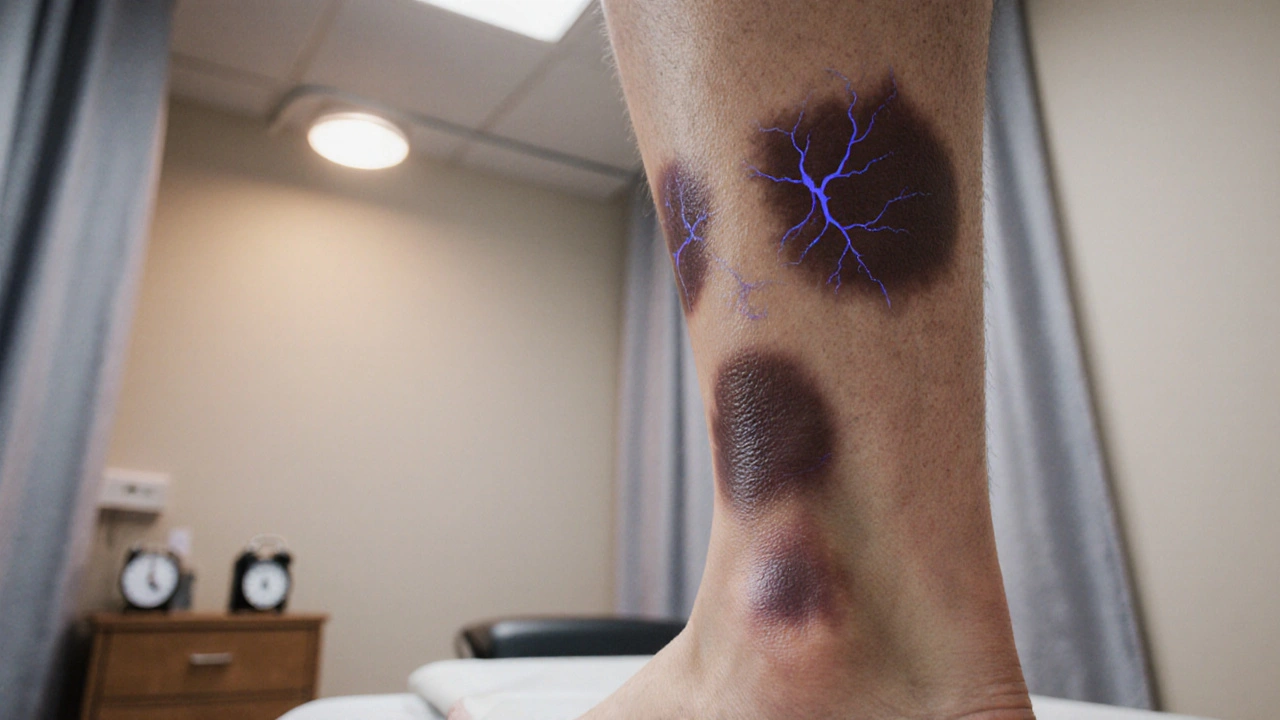KS Symptoms: What They Are, Why They Matter, and What to Do Next
When people talk about KS symptoms, the visible and systemic signs of Kaposi's sarcoma, a cancer linked to weakened immunity and HHV-8 virus. Also known as Kaposi sarcoma, it often shows up as discolored patches or bumps on the skin, but can also affect internal organs. These aren’t just cosmetic issues—they’re warning signs that your immune system is under serious stress, especially if you have HIV, are on long-term immunosuppressants, or have a history of organ transplant.
KS symptoms usually start with purple, red, or brown spots on the skin, often on the legs, face, or inside the mouth. They don’t itch or hurt at first, which is why many people ignore them until they spread. In more advanced cases, swelling in the legs or digestive problems like nausea and bleeding can happen if the cancer affects lymph nodes or the gut. This isn’t rare among people with advanced HIV—it’s one of the classic AIDS-defining illnesses. But it’s also showing up in older adults, organ recipients, and even some without known immune issues, which is why awareness matters.
What connects all the cases? immunosuppression, a state where the body’s ability to fight infection and abnormal cell growth is reduced. This is the main driver behind KS development. The virus that causes it, HHV-8, lives quietly in most people—but when your immune system drops below a certain level, it wakes up and starts triggering abnormal cell growth. That’s why managing underlying conditions like HIV with antiretrovirals can stop KS in its tracks, or even make existing lesions shrink.
And it’s not just about skin. Some people with KS symptoms also experience swollen lymph nodes, unexplained fatigue, or weight loss. These aren’t always listed in basic guides, but they show up in real patient reports and clinical reviews. If you’ve been told your immune system is compromised—or if you’re taking drugs that suppress it—pay attention to any new skin changes, even if they seem small. Early detection means better outcomes, and often simpler treatment.
What you’ll find in the posts below isn’t just a list of articles. It’s a collection of real, practical insights from people who’ve dealt with similar conditions: from how steroids can mimic or mask KS lesions, to how certain medications affect immune response and cancer risk. You’ll see comparisons between treatments, stories about misdiagnosis, and clear guidance on when to push for further testing. No fluff. No guesswork. Just what you need to recognize the signs, understand the risks, and take the next step with confidence.

Kaposi Sarcoma Explained: Causes, Symptoms, Diagnosis & Treatment
A clear, human‑focused guide that explains what Kaposi Sarcoma is, its causes, symptoms, diagnosis, treatment options and how to manage the disease daily.
October 8 2025